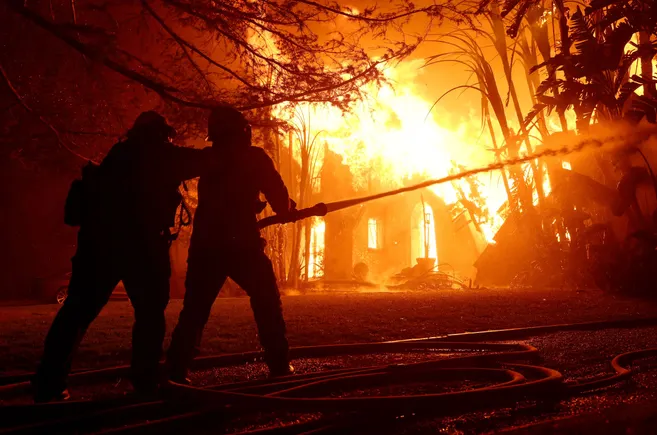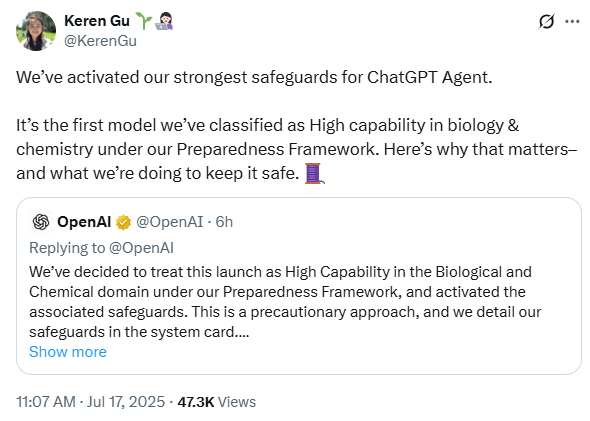
The United States has already experienced more wildfires this year than it has over same period in any other year this decade, according to the National Interagency Fire Center.
With the risk of fire expected to grow due to climate change and other factors, utilities have increasingly turned to technology to help them keep up. And those efforts could get a boost following President Donald Trump’s June 12 executive order calling on federal agencies to deploy technology to address “a slow and inadequate response to wildfires.”
The order directed agencies to create a roadmap for using “artificial intelligence, data sharing, innovative modeling and mapping capabilities, and technology to identify wildland fire ignitions and weather forecasts to inform response and evacuation.” It also told federal authorities to declassify historical satellite datasets that could be used to improve wildfire prediction, and called for strengthening coordination among agencies and improving wildland and vegetation management.
Additionally, the order laid out a vision for consolidating federal wildfire prevention and suppression efforts that are currently spread across agencies. The White House’s proposed 2026 budget blueprint would create a new, unified federal wildland fire service under the Department of Interior.
So far, Trump’s directive has drawn a mixed response from wildfire experts. While some said it could empower local governments and save utilities money, others said the order’s impact will be limited.
“I think some people read into the order more than is there, and some people read less,” said Chet Wade, a spokesperson for the Partners in Wildfire Prevention coalition. “I don’t know exactly what will come of it, but getting technology into the right hands could be very helpful.”
Fire prevention goes high tech
Since the 2018 Camp Fire that bankrupted PG&E and set a nationwide precedent for suing utilities that trigger large fires, energy companies around the U.S. have invested billions of dollars in grid hardening and undergrounding power lines. Public safety power shutoffs are now routine during high-risk weather for many utilities, especially in the West. Many utilities have invested in new monitoring equipment and artificial intelligence to better detect and prevent fires.
Abhishek Singh, CEO and co-founder of AiDash, which builds software for monitoring wildfires, said technology has allowed utilities to make significant strides in areas like tree management, where AI paired with satellite imagery can help them identify high-risk areas. Trump’s executive order, he said, could make this technology even cheaper by releasing satellite imagery that companies like AiDash can use to train their AI models.
That, in turn, could make AI monitoring more accessible to local governments and firefighting agencies with limited budgets, Singh said. He believes more government monitoring will allow utilities to relax their own surveillance efforts, freeing resources for other concerns like hardening grid infrastructure.
Former FERC commissioner and chairman Neil Chatterjee, who has accepted a role as an advisor to AiDash, shares Singh’s views on the potential of technology to mitigate wildfire risk. The executive order, he said, could “modernize wildfire prevention and bring federal policy in line with the technology that is available.”
Technology advances as risk grows
While Wade said he hoped the federal government improves coordination between agencies and increases access to public lands for vegetation management, he expressed skepticism the executive order would have much impact.
For one, he said, it calls for giving more authority to local governments, but it doesn’t say anything about ensuring those communities have the resources they need to address wildfires.
The president’s budget blueprint calls for funding the new federal fire service with $3.7 billion, plus $2.8 billion for a wildfire suppression reserve fund. But it would eliminate funding from other agencies and programs that have historically played a role in addressing wildfires, including grants to support local firefighting efforts and the management of state and privately-owned forests.
“While the budget provides robust support for Federal wildland fire management activities alongside States and local partners, these partners should be encouraged to fund their own community preparedness and risk mitigation activities,” the proposed budget states.
U.S. Forest Service Chief Tom Schultz confirmed in testimony before lawmakers on the Senate Energy and Natural Resources Committee last week that the administration still has not released some firefighting funds to states for the current fiscal year, saying, “We’re still in discussion.”
Trump has walked back his earlier calls to eliminate the Federal Emergency Management Agency in recent days. But the tax and spending bill he signed into law July 4 cuts funding for research and forecasting of climate-related threats. Partners in Wildfire Prevention said it was too early to determine what the cuts mean for wildfire mitigation.
Andrew Dressel, a power industry consultant and vice president at Charles River Associates, cautioned that even as utilities prepare and technology advances, the risk of fire continues to increase as well.
While the order focuses on prescribed burns and wildland management, he said recent urban fires like those that devastated Los Angeles have called attention to the need to harden homes and yards against fire. They have also raised concerns about the role of idle power lines in starting fires. But moving, upgrading or removing power lines is expensive and time-consuming, and utilities are facing these costs at a time of unprecedented projected load growth.
“An executive order can only do so much,” Dressel said. “We need legislation, federal legislation or state legislation or both, to really move the needle on these things.”




















